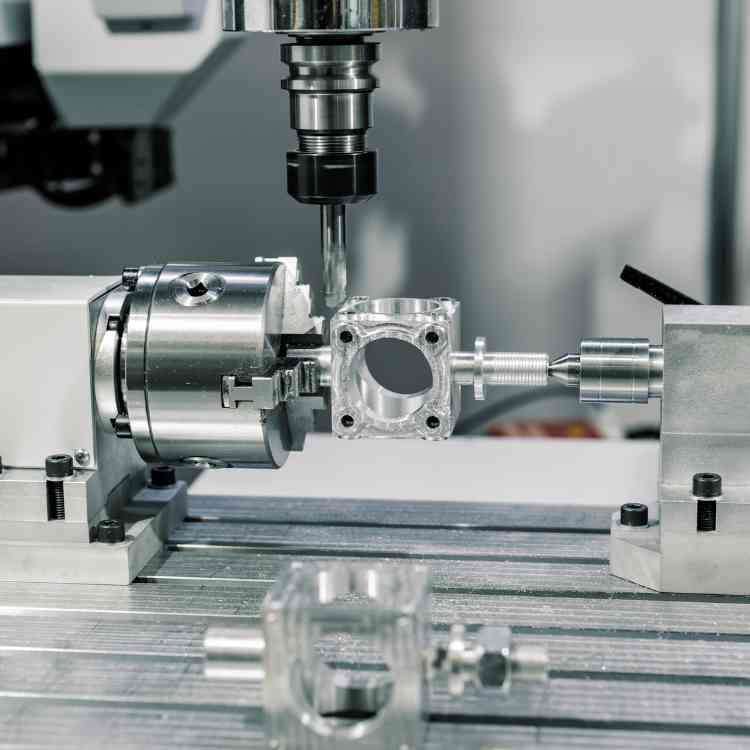Secondary Operations on Standard Fasteners: Enhancing Performance
Fasteners are essential components in various industries and applications, ensuring the stability and integrity of assemblies. Standard fasteners, such as screws, bolts, and nuts, are the backbone of mechanical connections. While standard fasteners are highly functional in their original form, they can be improved and tailored to specific needs through secondary operations.
This article will explore some everyday secondary operations performed on standard fasteners, unlocking their potential for enhanced performance and versatility.
-
Cross-Drilled Heads and Shanks
Cross-drilling involves creating holes perpendicular to the axis of the fastener's head or shank. This operation offers several advantages, including reduced weight, improved lubrication, and the ability to secure components using pins or wires. Cross-drilled heads are often used in safety-critical applications, such as aerospace and automotive industries, to prevent fastener failure and catastrophic consequences.
-
Through Hole Body Drilling
Through-hole body drilling involves creating a hole that passes entirely through the fastener's body. This operation facilitates the insertion of additional components or the use of fasteners as alignment pins. Through-hole body drilling increases the versatility of standard fasteners and enables unique assembly configurations.
-
End Drilling
End drilling creates a hole at the tip or end of the fastener. This operation allows for easy alignment and installation, especially when dealing with blind holes or areas with limited accessibility. Additionally, end drilling can aid in reducing the fastener's overall weight while maintaining its structural integrity.
-
Modify Head Heights
A standard fastener's head height can enhance its load-bearing capacity and distribution. By modifying the head height, engineers can tailor fasteners to suit specific requirements, ensuring optimal performance in diverse applications.
-
Turn Down Body Diameters - Captivating
Turning down the body diameter of a fastener involves reducing its diameter to a specific dimension. This captivating process increases the fastener's versatility by allowing it to fit into tight spaces or clearance holes with precise tolerances.

-
Turn Special Points
Turning particular points on fasteners creates customized tip geometries, such as conical, spherical, or chamfered points. These specialized points offer improved alignment, self-centering capabilities, and better penetration, making them ideal for delicate materials or applications where minimizing damage is crucial.
-
Head and Body Slotting
Slotting a fastener's head or body enables screwdrivers or other tools to drive or remove them. Slotted fasteners are found in applications where torque limitations are essential and when the fasteners may need to be easily adjusted or disassembled.
-
Sockets/Hex Bolts Turned Down to Shoulder Screws
Converting standard bolts or screws into shoulder screws by turning down their shank to a specific diameter allows for accurate positioning and precise alignment within an assembly. Shoulder screws are commonly used in industries such as electronics and machinery.
-
Grooving
Grooving involves cutting a groove along the body or head of a fastener. This process can create retaining rings or washers, increasing the fastener's grip or providing a designated area for O-rings or other sealing components.
-
Milling Flats - Head & Shanks
Milling flats on the head or shank of a fastener provide a flat surface for a wrench or other tools to grip securely. This operation enhances the fastener's torque transmission capabilities and reduces the risk of slippage during tightening or loosening.
-
Broaching
Broaching is a machining process that creates precise and complex shapes on the surface of fasteners. This machining process produces splines, keyways, or other intricate features that provide positive engagement with mating parts.
-
Fluid Bolts
Fluid bolts are specialized fasteners with internal passages that allow fluid or gas to flow through them. These bolts find applications in fluid power systems and applications requiring hydraulic or pneumatic connections.
Secondary operations on standard fasteners enhance their performance, versatility, and suitability for specific applications. These modifications allow engineers and manufacturers to adapt fasteners to meet unique requirements and achieve optimal results in various industries.
Whether it's aerospace, automotive, electronics, or machinery, the ability to customize fasteners through secondary operations empowers innovation and efficiency in engineering and design.

